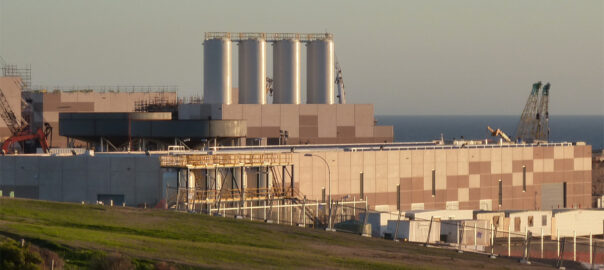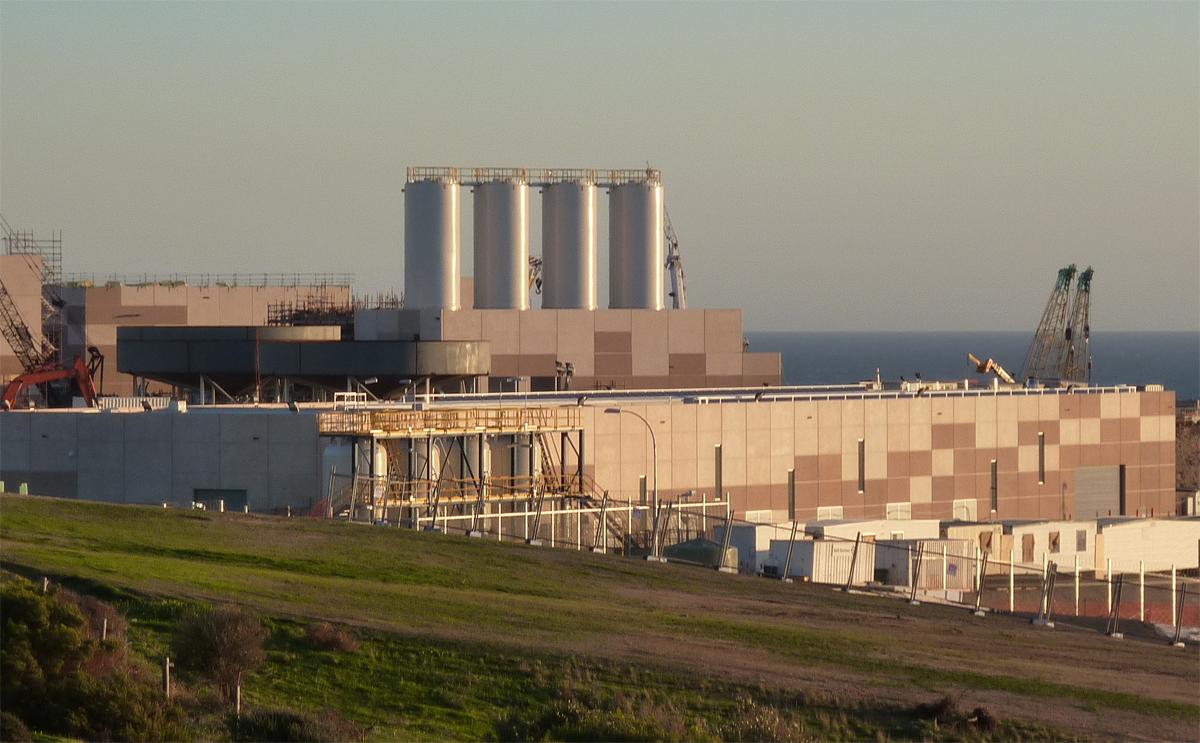
Desalination and the Global Water Crisis: A Complicated Solution
Port Stanvac Desalination Plant under construction, South Australia. Source: Wikimedia Commons
Freshwater reserves are shrinking while climate pressures rise, and desalination is gaining ground as a potential long-term strategy. It’s critical to examine the capabilities, limitations, and impacts of this high-tech process—and the factors that will shape its viability as a global solution.
As global warming rises at record rates and the world population continues to increase, the human race is facing resource shortages across the globe. Perhaps one of the most crucial, but location-dependent, is water. We can survive up to 70 days without food, but only five days without fresh drinking water. It’s an undisputed necessity for human survival. Despite living on our aptly named “blue planet,” only 3% of our water is fresh, two-thirds of which is locked up in ice caps and glaciers or is inaccessible deep beneath the ground.
With reservoirs drying up, dams becoming less effective at storing water, and around 40% of the world’s population already living in water scarcity, is there an obvious solution? One fix being explored in coastal areas is desalination—the removing of salt and other minerals from seawater for it to be processed into potable water.
Though this may seem straightforward, desalination involves a range of trade-offs. Constructing and operating processing plants is complex, not to mention expensive, and the process raises significant health and environmental concerns. At this critical juncture in water supply and sustainability, countries around the world are weighing up the benefits and drawbacks of this innovative but resource-intensive industry.
From Innovation to Necessity
We collect freshwater in a variety of ways, with underground aquifers the most common source. Increasingly, these groundwater reserves are being depleted faster than they are replenished, with the effects being felt most harshly in arid environments like deserts and savannahs. As traditional sources become less and less reliable, the need for a new technology has become more urgent.
The man credited for the creation of seawater desalination is Ukrainian-Israeli engineer Alexander Zarchin, who patented the idea in the mid-1960s after emigrating to Israel shortly after the end of the Second World War. Upon his arrival, the newly formed Israeli state was undergoing severe water shortages, with residents limited to just ten liters per day. In response, Zarchin developed his pioneering desalination system and went on to help establish Israel Desalination Engineering Ltd, later IDE Technologies Ltd. The Zarchin process, Vacuum Freezing Vapor Compression (VFVC), involved freezing saltwater in a vacuum, separating ice crystals from impurities, and then melting the ice into freshwater. Although this technique is no longer in use, Zarchin’s innovation laid the groundwork for today’s more advanced desalination methods.
The efficacy of these methods is more critical than ever. The World Resources Institute (WRI) estimates that by 2040, 33 countries will be facing extremely high water stress, over 40% of which are located in the Middle East. It is no surprise, then, that the world leaders in mass desalination are based in this region. The Middle East and North Africa produce 62% of the world’s desalinated water, with the UAE alone generating almost 30% of global output.
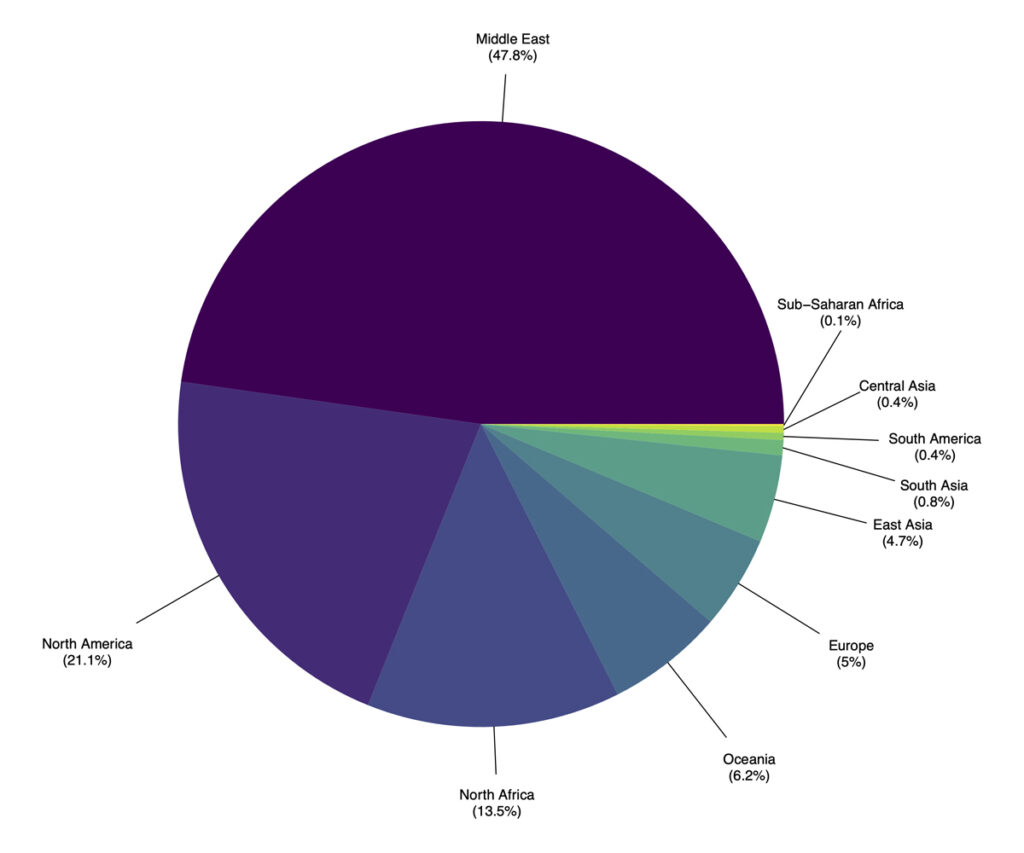
Although most of the freshwater output is generated in the Middle East and North Africa, North America houses 80% of the world’s major desalination plants (those producing over 100,000 cubic meters of freshwater per day). Florida alone hosts more of these major plants than the entire Middle East and North Africa combined. So why isn’t North America leading the world in desalinated water production? One major reason is necessity—countries in the most arid regions of the world, such as the Middle East, have limited access to freshwater. With access to groundwater and rivers, North America relies far less on desalination, which supplies under 4% of the USA’s potable water, compared to over 80% in the UAE. Another key factor is energy. Desalination demands a lot of power, and with vast fossil fuel reserves, the Middle East can operate larger plants at lower costs than their American counterparts. As a result, many US facilities operate below capacity.
Behind the Process: Thermal and Membrane Methods
Desalination is primarily driven by two technologies: thermal distillation, and membrane-based reverse osmosis. Both systems begin with physical and chemical filtering of seawater, removing large particles and other impurities to protect the equipment in the next part of the process.
Thermal methods involve heating seawater to boiling point to produce steam which is then condensed, leaving the salt and impurities behind. Facilities using this method require regular maintenance and high amounts of energy (though this can be sourced as a byproduct of other industries, such as manufacturing). Despite the high running costs, heat-based methods have been found to be more effective than membrane systems in treating highly saline water—ideal for regions with abundant thermal energy and very salty seawater like the Middle East.

Reverse osmosis forces pressurized seawater through multiple semi-permeable membranes. These membranes are covered in tiny pores which allow water molecules through but block impurities, such as salt. Reverse-osmosis desalination plants generally have a higher setup cost—limiting access for less affluent regions—but once up and running, operating and maintenance costs are relatively low. This technology is also easily adaptable; operations can be scaled up and down to meet specific demands and can be adjusted to filter different levels of salinity.
The choice of technology will depend on local conditions, but all desalination processes raise a common issue: what happens to the salt?
Environmental Impacts
The unavoidable waste product of a highly salty solution is called brine, and it can be twice the salinity of regular seawater. Often brine is disposed directly back into the ocean and, if discharged in large enough quantities, can severely disrupt marine life and ocean systems. In warm water regions this can include coral bleaching, reduced mangrove growth and an increase in harmful algal blooms. It can also slow thermohaline circulation (THC)—a natural system of deep currents carrying nutrients across the world’s oceans which are influenced by temperature and salinity. In worst case scenarios this could lead to abrupt ecosystem shifts, resulting in significant changes in the food chain known as trophic cascades. And it wouldn’t just affect marine life; the loss of coral reef ecosystem services—such as tourism, fisheries, and coastal protection—could result in global economic losses of over 700 billion USD per year.
The standard level of brine mitigation involves pumping it several kilometers offshore, where it can dissipate into the water column more easily and cause less harm to fragile coastal ecosystems. This still poses a significant threat to pelagic (open sea) species and can disrupt the THC in the open ocean.
A number of strategies have been proposed to make use of brine waste instead of simply discharging it into the ocean, including use in therapeutic pools, extracting valuable minerals such as lithium and magnesium, and even using it as an energy source—known as osmotic or “blue energy.” Despite their potential, these strategies are constrained by legal, regulatory and financial barriers, restricting them to academic studies rather than widespread implementation.
Missing Minerals: Hidden Health Risks?
The primary human health concern for desalinated water is not what it may contain, but what it lacks. Seawater is extremely high in ions, and following the desalination process, these ions are reduced to lower levels than found in traditional water sources. Over long periods, people who consume desalinated water—especially the more vulnerable members of society, including infants and the autoimmune—can develop a deficiency in ions like sodium, magnesium and calcium. Areas of harder water (containing more minerals) have tended to record lower levels of cardiovascular disease, likely due to the magnesium and calcium present in the water supply.
A lack of these minerals can lead to electrolyte imbalances, a trait commonly found in cancer patients. There is no direct evidence that drinking desalinated water causes cell mutations, but a deficiency in certain nutrients found in natural freshwater, especially when combined with other risk factors, may be linked to a higher risk of cancer. Many of the nutrients stripped away in the desalination process can be reintroduced to the water at a later stage, but as with food, the nutritional composition of our drinking water warrants ongoing consideration and study.
Economic Concerns
Unsurprisingly, desalination isn’t cheap, with expenses split between construction of the processing plant and ongoing operating costs. The largest hybrid power and desalination plant is the Ras Al-Khair station in Saudi Arabia. It uses both thermal and reverse-osmosis desalination methods, as well as incorporating a combined-cycle gas turbine system to produce electricity. This station took five years to construct at a cost of over 7 billion USD, producing 1.05 million cubic meters of freshwater and 2.65 gigawatts of energy per day—enough water to provide for 3.5 million people in the country’s capital of Riyadh.
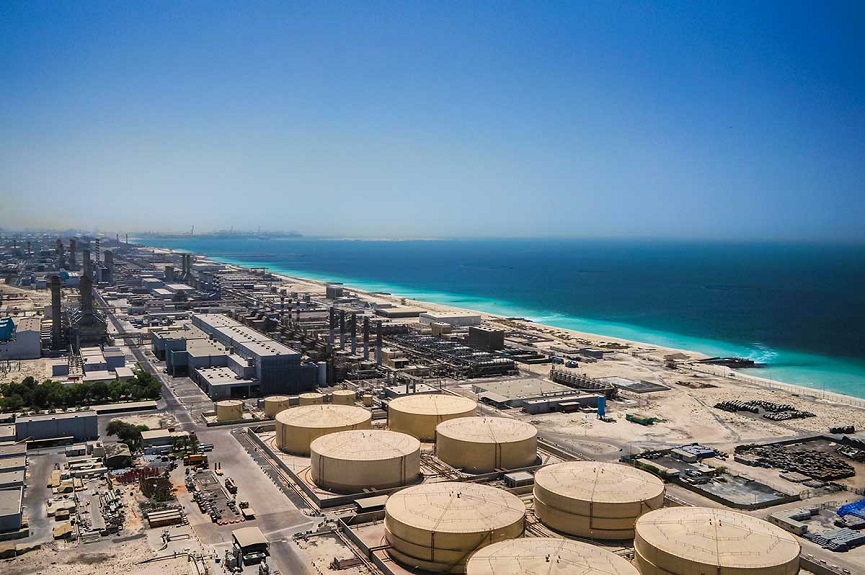
The vast startup cost of this plant highlights the struggles that less affluent countries are facing. Kuwait, for example, is the third most water-poor country in the world, but has a robust GDP per capita of 34,000 USD. They can run multiple desalination plants and produce the third-highest volume of treated water in the world. Compare this to a country like Yemen—twelfth water-poorest—where, as a result of conflict and economic struggle, they have a GDP per capita of 480 USD and are unable to construct such expensive plants. The result is a stark disparity within one water-scarce region between countries able to fund and access desalination projects, and countries that cannot—and it’s a disparity repeated all over the world.
Moving Forward
Desalination seems set to become an essential lifeline for the increasing number of regions facing water stress globally. Some countries have successfully integrated desalination into their water supply (see our feature on Spain’s desalination drive), but high costs and environmental concerns pose obstacles to widespread adoption. With the price of processing seawater slowly falling, it could become more accessible to less wealthy nations—but while resources continue to shrink as populations grow, the pressure is undoubtedly on.

The Future
Six Drivers of Global Change
Al Gore
No period in global history resembles what humanity is about to experience. Explore the key global forces converging to create the complexity of change, our crisis of confidence in facing the options, and how we can take charge of our destiny.

Our Choice
A Plan to Solve the Climate Crisis
Al Gore
We clearly have the tools to solve the climate crisis. The only thing missing is collective will. We must understand the science of climate change and the ways we can better generate and use energy.
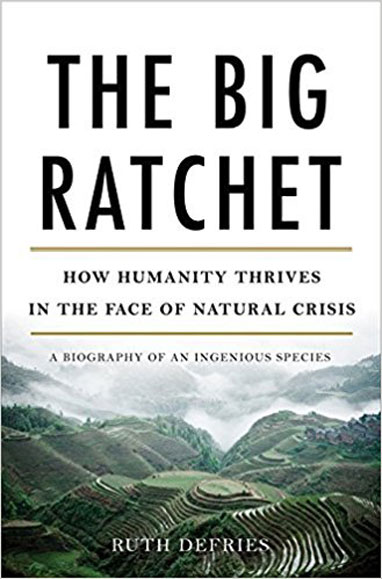
The Big Ratchet
How Humanity Thrives in the Face of Natural Crisis
Ruth DeFries
Human history can be viewed as a repeating spiral of ingenuity—ratchet (technological breakthrough), hatchet (resulting natural disaster), and pivot (inventing new solutions). Whether we can pivot effectively from the last Big Ratchet remains to be seen.

